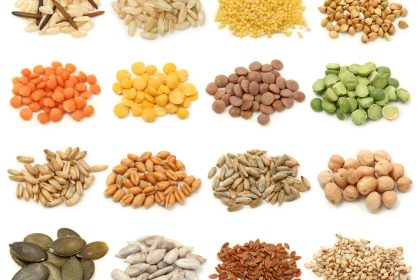Sweet potatoes seem like they should be off-limits for anyone trying to control their blood sugar, but this orange-fleshed root vegetable actually has surprising properties that make it one of the best carbohydrate choices for people with diabetes, prediabetes, or anyone concerned about glucose management. The assumption that all starchy foods spike blood sugar equally has prevented many people from discovering this powerful ally in blood sugar control.
Despite their natural sweetness and substantial carbohydrate content, sweet potatoes have a remarkably different effect on blood glucose compared to other starchy foods like white potatoes, white rice, or bread. The unique combination of fiber, resistant starch, and bioactive compounds in sweet potatoes creates a food that actually helps stabilize rather than destabilize blood sugar levels.
Understanding how sweet potatoes work in your body can transform your approach to carbohydrate consumption and give you a delicious, satisfying option that supports rather than sabotages your blood sugar management goals.
The glycemic index reveals sweet potatoes’ blood sugar advantage
Sweet potatoes have a significantly lower glycemic index than most other starchy foods, typically ranging from 30-50 depending on preparation method, compared to white potatoes at 70-85, white rice at 70-90, and white bread at 75-95. This lower glycemic index means sweet potatoes cause a much slower, more gradual rise in blood sugar.
The glycemic index measures how quickly foods raise blood glucose levels compared to pure glucose, and lower numbers indicate better blood sugar control. Sweet potatoes’ moderate glycemic index places them in the category of foods that provide steady energy without dramatic glucose spikes.
What makes this particularly impressive is that sweet potatoes achieve this lower glycemic response while still providing substantial carbohydrates and natural sweetness, proving that not all carbs affect blood sugar the same way. The complex carbohydrate structure in sweet potatoes requires more time and energy to break down than simple starches.
Cooking method significantly affects the glycemic impact, with boiled sweet potatoes having the lowest glycemic index, followed by baked, then fried. This variability gives you control over how dramatically sweet potatoes affect your blood sugar based on preparation choices.
Fiber content slows glucose absorption and improves insulin sensitivity
Sweet potatoes contain both soluble and insoluble fiber that work together to slow glucose absorption and improve overall blood sugar control. A medium sweet potato provides about 4 grams of fiber, which is substantial enough to significantly impact how quickly the carbohydrates are absorbed into your bloodstream.
Soluble fiber forms a gel-like substance in your digestive tract that physically slows the movement of food through your intestines, creating a time-release effect for glucose absorption. This prevents the rapid blood sugar spikes that occur when glucose floods your system all at once.
The fiber in sweet potatoes also feeds beneficial gut bacteria that produce short-chain fatty acids, which improve insulin sensitivity and glucose metabolism. This means that regular sweet potato consumption may actually improve your body’s ability to handle carbohydrates over time.
Insoluble fiber adds bulk to meals and increases satiety, helping prevent overeating and reducing the likelihood of blood sugar swings caused by consuming too many total carbohydrates at once. The combination of both fiber types makes sweet potatoes particularly effective for blood sugar management.
Resistant starch acts like fiber to stabilize glucose levels
Sweet potatoes contain resistant starch, a type of carbohydrate that resists digestion in your small intestine and instead ferments in your colon like fiber. This resistant starch doesn’t contribute to blood sugar elevation because it’s not broken down into glucose in the upper digestive tract.
The amount of resistant starch increases when sweet potatoes are cooked and then cooled, making leftover sweet potatoes even better for blood sugar control than freshly cooked ones. This retrograded starch provides the benefits of carbohydrates without the glucose impact.
Resistant starch also feeds beneficial gut bacteria, producing metabolites that improve insulin sensitivity and glucose tolerance. Regular consumption of foods high in resistant starch can lead to improved blood sugar control even when eating other carbohydrate-containing foods.
The fermentation of resistant starch in your colon produces butyrate and other short-chain fatty acids that have anti-inflammatory effects and may help prevent insulin resistance, making sweet potatoes beneficial for long-term metabolic health beyond their immediate blood sugar effects.
Antioxidants and phytonutrients provide metabolic benefits
The deep orange color of sweet potatoes indicates high levels of beta-carotene and other carotenoids that provide antioxidant protection against the oxidative stress associated with diabetes and blood sugar imbalances. These compounds help protect pancreatic beta cells that produce insulin.
Anthocyanins, particularly concentrated in purple sweet potato varieties, have been shown to improve glucose tolerance and insulin sensitivity in research studies. These powerful antioxidants may help prevent or slow the progression of insulin resistance and type 2 diabetes.
Chlorogenic acid, also found in coffee, is present in sweet potatoes and has been shown to slow glucose absorption and improve glucose metabolism. This compound works synergistically with fiber to provide better blood sugar control than either component alone.
The combination of multiple antioxidant and anti-inflammatory compounds in sweet potatoes provides comprehensive metabolic support that goes beyond simple glucose management to address the underlying inflammation and oxidative stress that contribute to diabetes progression.
Protein content helps stabilize blood sugar response
Sweet potatoes contain more protein than most other starchy vegetables, with a medium sweet potato providing about 2-3 grams of complete protein. While this isn’t a large amount, it’s enough to help moderate the blood sugar response when combined with the fiber and resistant starch.
Protein consumption along with carbohydrates helps slow gastric emptying and glucose absorption while stimulating insulin release in a more controlled manner. The protein in sweet potatoes works with the fiber to create a more balanced macronutrient profile than pure starchy foods.
The amino acid profile in sweet potatoes includes tryptophan and other amino acids that support neurotransmitter production and may help with the mood and sleep problems that often accompany blood sugar imbalances and diabetes.
Adding additional protein sources like nuts, seeds, or lean meats to sweet potato meals can further improve blood sugar control by creating an even more balanced macronutrient combination that minimizes glucose spikes.
Preparation methods affect blood sugar impact dramatically
Boiling sweet potatoes produces the lowest glycemic response because it preserves more of the fiber structure and doesn’t concentrate the sugars through moisture loss. Boiled sweet potatoes with the skin provide the best blood sugar control while maximizing nutrient retention.
Baking sweet potatoes increases the glycemic index somewhat because the dry heat concentrates sugars and breaks down some fiber structures, but baked sweet potatoes are still significantly better for blood sugar than most other starchy foods when prepared properly.
Eating sweet potatoes with healthy fats like olive oil, avocado, or nuts can further slow glucose absorption and improve the overall metabolic response. The fat helps trigger hormonal responses that slow gastric emptying and promote satiety.
Avoiding added sugars, marshmallows, or other high-glycemic toppings keeps sweet potatoes in the blood sugar-friendly category. The natural sweetness of properly prepared sweet potatoes is usually sufficient without additional sweeteners that would negate their metabolic benefits.
Sweet potatoes fit into comprehensive diabetes management
Sweet potatoes work best as part of a comprehensive approach to blood sugar management that includes appropriate portion sizes, balanced meals, and regular monitoring of glucose response. Individual responses can vary, so testing blood sugar before and after eating sweet potatoes helps determine personal tolerance.
Timing sweet potato consumption around physical activity can further improve glucose uptake and reduce blood sugar impact. Eating sweet potatoes before or after exercise takes advantage of enhanced insulin sensitivity that occurs with muscle activity.
Combining sweet potatoes with non-starchy vegetables, lean proteins, and healthy fats creates balanced meals that provide steady energy without dramatic glucose fluctuations. This approach makes sweet potatoes part of a sustainable eating pattern rather than a isolated food choice.
Regular consumption of sweet potatoes as part of a varied, whole-foods diet may provide cumulative metabolic benefits that improve overall glucose tolerance and insulin sensitivity over time, making them valuable for both preventing and managing diabetes.
The key insight is that sweet potatoes demonstrate how food quality and preparation methods matter more than simple carbohydrate avoidance for effective blood sugar management, offering a nutritious and satisfying option for people who need to control glucose levels without severely restricting their food choices.















